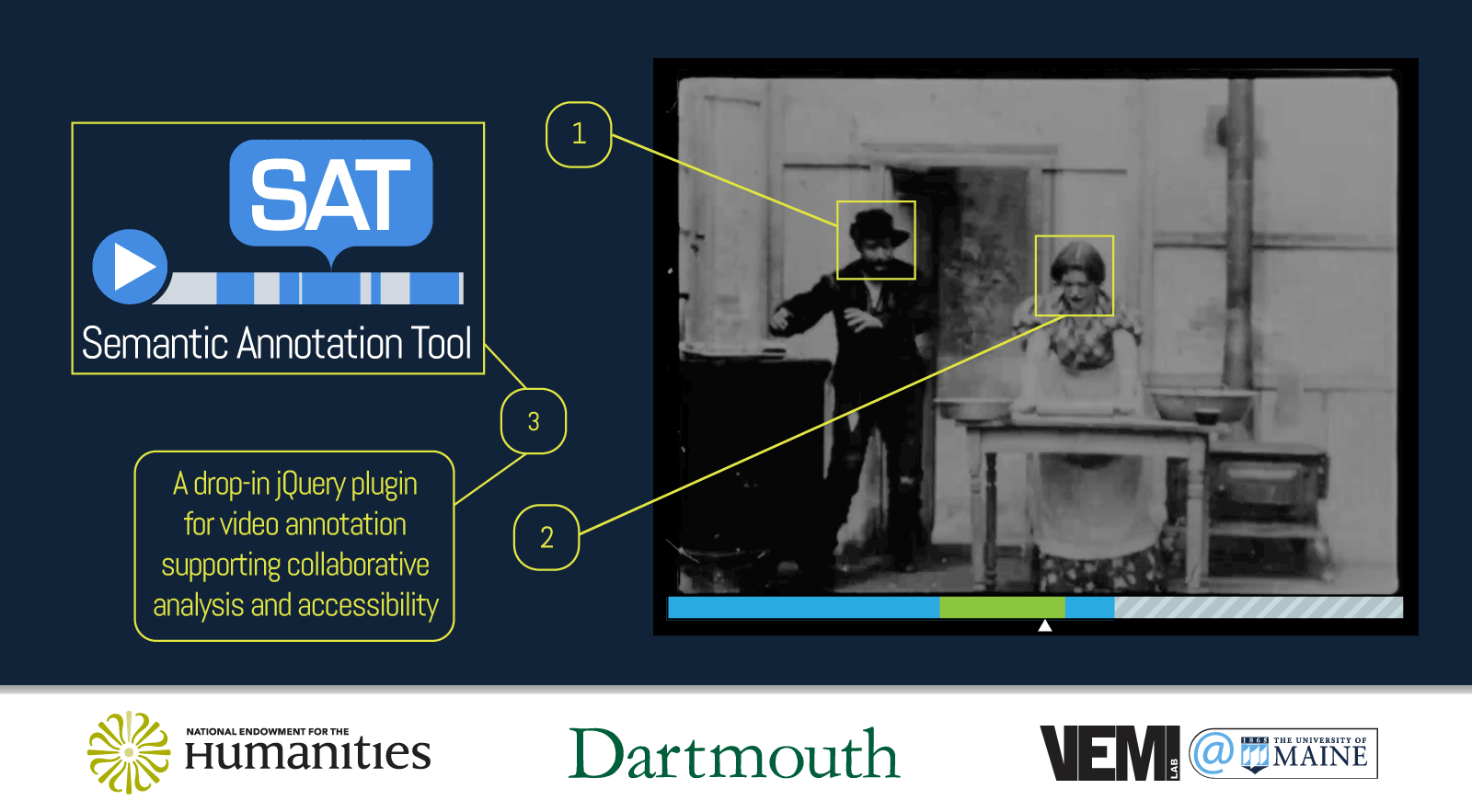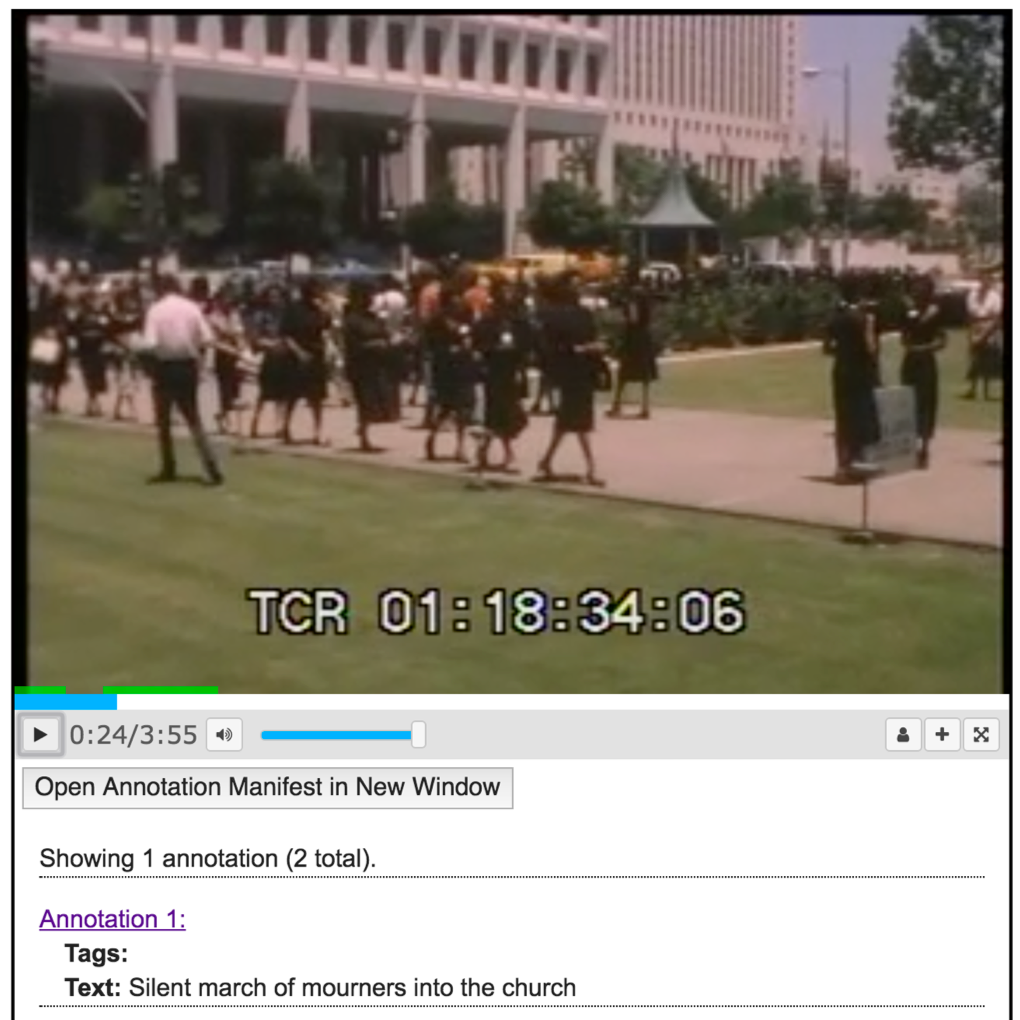
The Semantic Annotation Tool (SAT) is a drop-in module that facilitates the creation and sharing of time-based media annotations on the Web. SAT has two parts:
- A jQuery plugin that wraps an existing media player to provide an intuitive authoring and presentation environment for time-based video annotations
- A linked data-compliant Annotation Server that communicates with the plugin to collect and disseminate user-generated comments and tags using the W3C Web Annotation specification.
This system creates an end-to-end open source video annotation workflow that can be used as either an off the shelf or customizable solution for a wide variety of applications. Potential uses include collaborative close reading of video for humanities research, simplified coding of time-based documentation in social science studies, enhancing impaired vision accessibility for media clips on web sites, and many others.

SAT is designed to address significant functionality gaps in existing online time-based media annotation tools recognized during pilot studies conducted by The Media Ecology Project (MEP). This new, standards-based annotation tool can be easily dropped into a variety of classroom and research environments to extend their support for collaborative close reading of video and audio texts. The resulting annotations can then be shared across software platforms using an annotation server to connect scholars to archives, students to experts, or human annotators to machine vision algorithms.
In addition to its value in scholarship, combining time-based annotations with media playback on the web creates a new means of access to the cultural content embedded in visual and auditory media. SAT’s annotation interface was designed by the Virtual Environments and Multimodal Interaction Lab (VEMI Lab) at the University of Maine. VEMI Lab is the site of cutting edge research and development on adaptive computing interfaces and has built SAT to be compatible with screen readers, a key requirement for extending the benefits of annotation to users with impaired vision.
A simple demo of SAT is available for testing. Please contact us if you would like more information or have questions.
 Get Waldorf.js on GitHub Get Waldorf.js on GitHub |
 Get Statler on GitHub Get Statler on GitHub |
